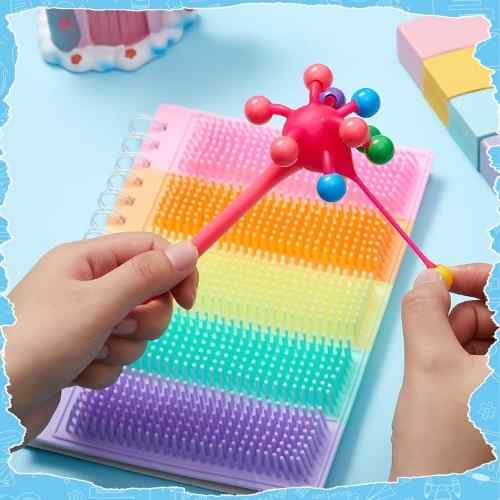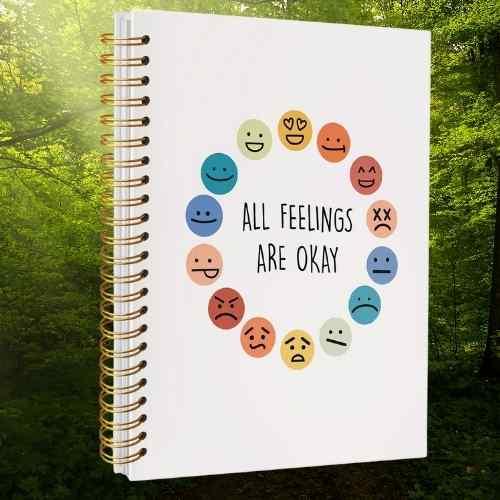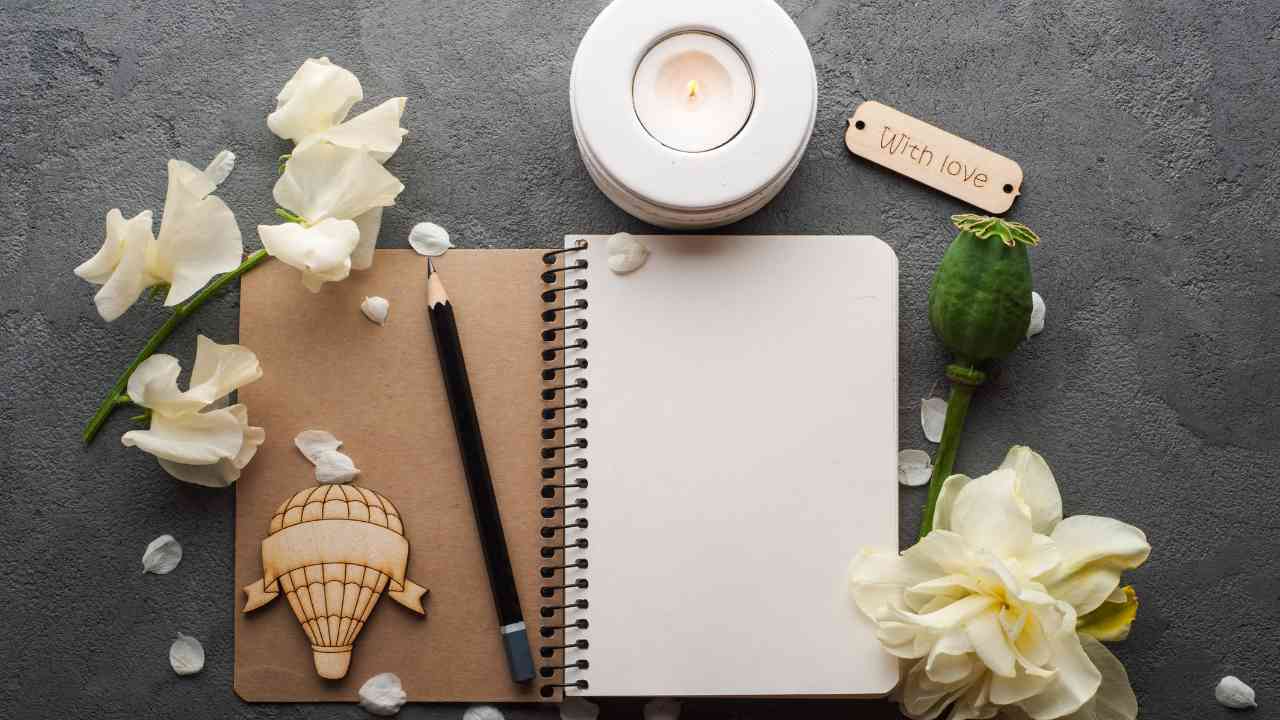Key Takeaways
- Sensory Journaling helps you slow down and notice small joys.
- It works by focusing on sight, sound, smell, taste, and touch.
- It reduces stress, boosts focus, and strengthens memory.
- You only need a few minutes a day to benefit.
- Adding creative touches makes the habit more engaging.
A Moment That Changed My Days
It was an ordinary morning—one of those when my head felt crowded with a hundred thoughts. I made coffee, barely noticing its smell. But then, for some reason, I paused. The steam curled upward, warm against my skin. The rich, earthy aroma filled my nose. My shoulders dropped. My breath slowed. For a moment, the noise in my mind faded.
That’s the first time I realized small sensory moments could pull me back into the present. When I began writing them down, I discovered a secret: the more I noticed, the calmer and happier I felt. This simple practice has a name—Sensory Journaling—and it can change the way you live every day.
What Is Sensory Journaling?
Sensory Journaling is a type of mindful writing that focuses on describing your experiences through the five senses: sight, sound, smell, taste, and touch. Instead of writing only about events or feelings, you record what your body experiences in the moment.
This might look like:
- The warmth of the sun on my cheek
- The crunch of leaves under my shoes
- The sweet scent of vanilla in the kitchen
By writing these down, you create a habit of noticing. You train your mind to pay attention to what’s happening now—not yesterday, not tomorrow.
How It’s Different from Regular Journaling
Regular journaling often focuses on thoughts, plans, or reflections about events. While this can be valuable, it usually stays in the mind’s territory. Sensory Journaling, on the other hand, engages the body and the five senses.
You are not just recalling facts—you are capturing how the world feels in the present moment. Instead of simply thinking about your day, you immerse yourself in its sensory details. This approach makes each entry richer, more vivid, and deeply grounding.
“Mindfulness is not about getting rid of thoughts, but about fully living in the present moment.” — Jon Kabat-Zinn
Why It Works: The Science Behind It
Science shows that sensory awareness can shift your brain into a calmer state. Here’s why:-
- Mindfulness activates the parasympathetic nervous system, which lowers stress hormones, slows your heart rate, and signals your body to relax. When practiced through Sensory Journaling, these calming effects become a natural part of your daily routine. (Ahead App)
- Writing helps process emotions by moving them from a swirling mental state onto paper. Through Sensory Journaling, you give those emotions shape, making them easier to understand, release, and manage without feeling overwhelmed. (Verywell Health)
- Focusing on the five senses interrupts overthinking and breaks worry loops. By anchoring attention in the present moment, you retrain your brain to notice real experiences instead of imagined stressors, which improves mental clarity and emotional stability. (Mindful.org)
Table 1 — Benefits of Sensory Journaling
| Benefit | What It Means in Simple Words |
| Stress Relief | You feel calmer, like taking a deep breath |
| Emotional Grounding | You stay in the moment, not in your worries |
| Better Focus | Your mind stays clear and steady |
| More Awareness | You notice small joys like sunlight or fresh bread |
How to Start Sensory Journaling
You don’t need fancy tools. All you need is something to write on and a few minutes.
Here is step-by-step guide:
- Choose your time – Decide whether mornings or evenings work best for you. Morning Sensory Journaling can set a positive tone for the day, while evening practice helps you reflect and unwind before bed.
- Write for each sense – Create one sentence for sight, sound, smell, taste, and touch. This method ensures your Sensory Journaling covers all sensory experiences, making each entry balanced, complete, and deeply mindful.
- Add emotional notes – Go beyond describing the senses. Include feelings like “This makes me feel calm” or “This reminds me of my grandmother’s kitchen” to deepen self-awareness and emotional connection.
- Be specific – Replace vague statements with vivid details. Instead of “I hear birds,” try “I hear two sparrows chirping outside my window,” which adds richness and makes the moment easier to recall later.
Tips for Easy Daily Use
- Keep it short — Even 5 minutes is enough: Sensory Journaling doesn’t need to take a lot of time. Just five minutes a day is enough to engage your senses, record meaningful details, and still keep the habit stress-free.
- Use bullet points for busy days: On days when your schedule is packed, try writing quick bullet points in your Sensory Journaling notebook. This keeps the process simple while still capturing key sensory moments worth remembering.
- Write anywhere — On the bus, at lunch, before bed: Sensory Journaling is flexible, so you can write anywhere. Whether you’re commuting, taking a lunch break, or winding down before bed, you can record what you see, hear, and feel.
- Don’t judge your words: The purpose of Sensory Journaling is observation, not perfect writing. Focus on noticing details from your surroundings, emotions, and senses rather than worrying about grammar, style, or sentence structure.
Table 2 — Sample One-Day Sensory Entry
| Sense | What You Write | How It Makes You Feel |
| Sight | The golden sunset over rooftops | Peaceful and small in a good way |
| Sound | Wind rustling tree leaves | Relaxed and safe |
| Smell | Freshly baked bread | Comforted and warm |
| Taste | Sweet cinnamon tea | Cozy and content |
| Touch | Soft blanket on my lap | Protected and calm |
Sensory Journaling for Different People
- 🧒 For Kids: Sensory Journaling can be turned into a fun game by asking questions like “What do you see?” or “What do you smell?” Encourage them to draw their experiences instead of writing.
- 👩 For Adults: Incorporating Sensory Journaling into daily life is an excellent way to take mindful breaks from screens, reconnect with your surroundings, and boost awareness of the present moment.
- 😰 For Anxiety: During stressful moments, Sensory Journaling with focused prompts helps ground your thoughts by engaging sight, sound, smell, touch, and taste, creating a calming shift toward mindfulness.
Journaling Tools & Amazon Picks
1. Sensory Journal Notebook & Fidget Pen Set

Enhance your Sensory Journaling experience with this unique notebook and fidget pen set. Featuring a soft silicone cover, 160 lined pages, and a playful decompression pen, it combines mindful writing with stress relief. Perfect for capturing sensory details anywhere—whether at home, in the office, or on the go—this set turns journaling into a calming, tactile experience. Available in soft pastel colors for added visual delight.
2. ANECDOTE. Premium Hardcover Dotted Journal

Perfect for Sensory Journaling, this elegant A5 hardcover journal features 200 pages of thick 100 gsm dotted paper, offering a smooth, luxurious writing experience. Its lay-flat design, elastic closure, and inner pocket make it ideal for travel, school, or office use. Durable yet stylish, it’s a versatile companion for capturing sensory details, creative ideas, and daily reflections—an inspiring gift for writers, artists, and mindful living enthusiasts.
3. Wheatwin Mental Health & Emotion Wheel Journal

A delightful companion for Sensory Journaling, this 5.5 × 8.3-inch hardcover spiral notebook combines durability with style. Its waterproof cover and smooth pages make it perfect for daily reflections, emotional check-ins, or creative sketches. Featuring an uplifting design and portable size, it’s ideal for students, teens, and adults seeking a mindful, on-the-go journaling tool—perfect for capturing sensory moments and exploring feelings with ease.
Final Thoughts
Sensory journaling is a simple yet transformative practice that deepens your connection with the present moment. By consciously recording what you see, hear, smell, taste, and touch, you train your mind to slow down and appreciate life’s subtle details. Over time, this habit sharpens your awareness, boosts mindfulness, and enriches your daily experiences.
Whether through morning coffee aromas, the sound of rain, or the texture of a favorite blanket, these small moments create a richer, more meaningful life. Sensory journaling isn’t just about words—it’s about preserving feelings, textures, and experiences that might otherwise fade. Start today, and you’ll uncover beauty in the everyday.
Table 3 — Quick Start Plan
| Day | Action Step | Time Needed |
| 1 | Write one sense detail | 2 min |
| 2 | Add feelings to each detail | 5 min |
| 3 | Try writing in a new location | 5 min |
| 4 | Add a drawing or small collage | 10 min |
| 5 | Reflect on your favorite entry | 5 min |








[…] This is why many describe mirror mindfulness as not only a tool for calm but also a tool for emotional healing. […]